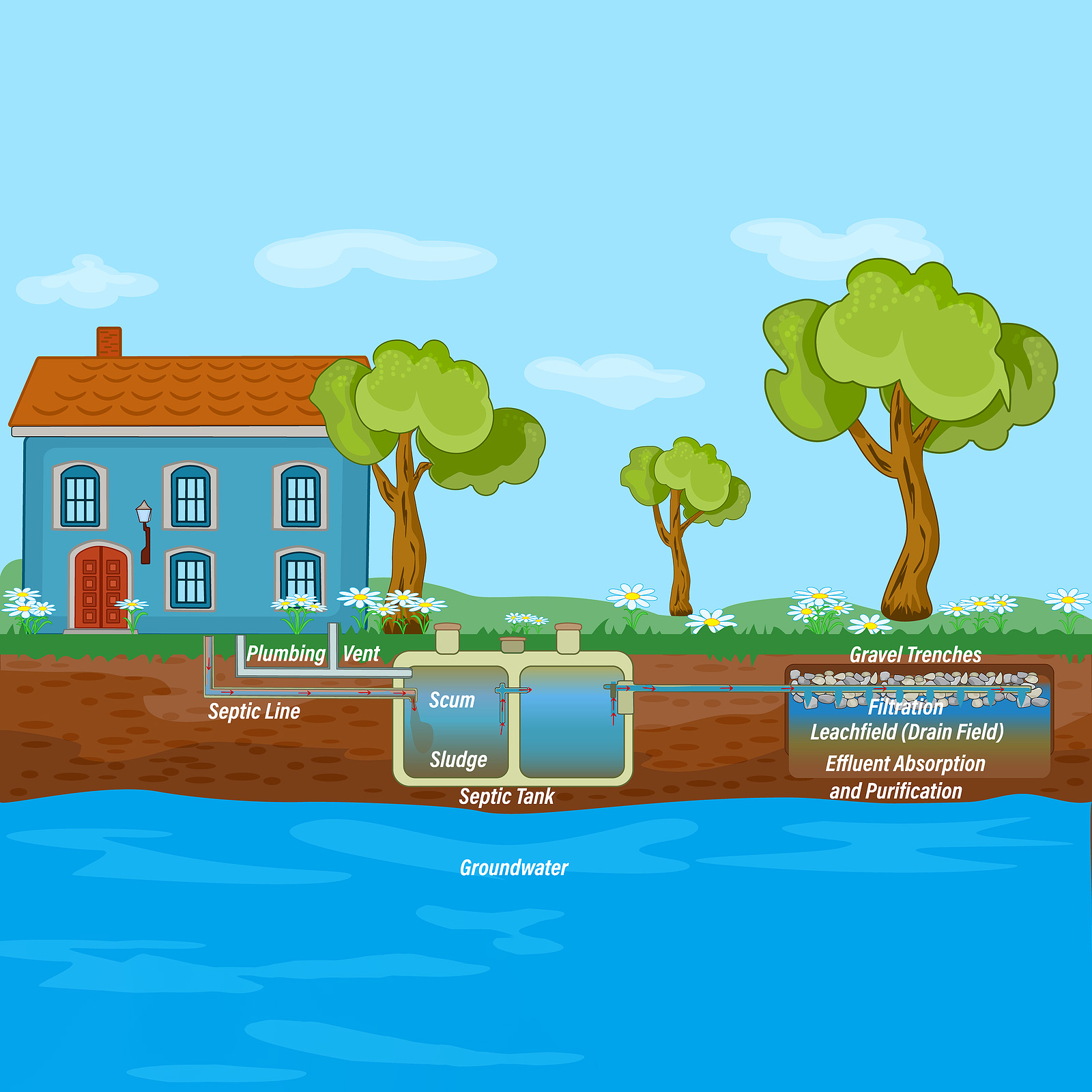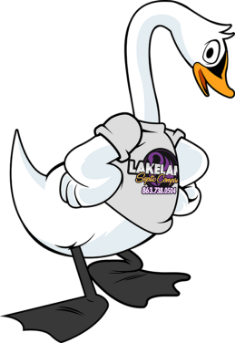Homes and businesses that aren’t connected to a municipal sewer line are usually set up with septic systems. Modern septic systems include a septic tank, a drain field, pipes, filters, baffles and other components that all work in harmony to handle and process waste from toilets and drains.

Lakeland Septic Company has been installing and servicing septic systems throughout the Lakeland, FL, region for more than 15 years. We’d like to give you an overview of how septic systems work and how you can keep yours working better and longer.
From the Home to the Tank
When you’re connected to a septic system, all your home’s drains will be directed to a stub that extends from the house and feeds the septic tank. Once inside that tank, the effluent (solids and liquids) is attacked by good bacteria and broken down. This is a good process, except that bacteria secrete sludge, which will build up over time.
From the Tank to the Drain Field
Liquids and solids are separated in the septic tank, and then the liquid is sent to a drain field. In the drain field, liquids are processed and sent into the local soil.
Special Septic System Components
Lift station: A lift station, also called a lift station pump, is designed to force sewage from a lower elevation to a higher elevation. Depending on the slope of a property, a lift station may be needed to help sewage move into and through the septic system.
Baffles: Modern septic tanks usually include two baffles. Inlet baffles regulate the flow of incoming effluent, allowing particles and scum to descend to the base of the tank. Exit baffles help keep solids from escaping the tank and moving to the drain field.
Filters: In most recently built systems, filters add another layer of protection for the drain field by blocking the escape of solids.

Placement of the Septic Tank and System
When the Lakeland Septic crew does a septic installation, we ensure that all the parts and components are installed correctly and according to code. We also place high importance on where the system is installed. This involves four main considerations.
When installing a septic system, we want to place it in an area where heavy vehicles or machinery won’t be driven over it or parked on top of it. We also want to install in an area that’s free of invading roots from trees and foliage, which could damage parts of the system. We’ll test the soil and make modifications, if necessary, in order to provide stable support for the heavy septic system. Finally, we want to install the system in a way that will allow access for repairs, pumping and inspections in the future.
Septic System Inspections
If your septic system was installed by licensed professionals, it should give you consistent service with few or no problems. However, keeping a septic system and all its components running well requires periodic inspections.
By having our technicians inspect your system, you’ll quickly know of any small problems that could become large if ignored. We’ll spot signs of damage and malfunction and explain in simple language what needs to be done to resolve them.

Call Your Lakeland Septic Experts Today
If it’s time for a septic tank pumping, system inspection, repair work or troubleshooting some “odd” symptoms, our crew is ready to help. Speak with a septic expert today at (863) 738-0504. You can also reach out with our handy contact form.


